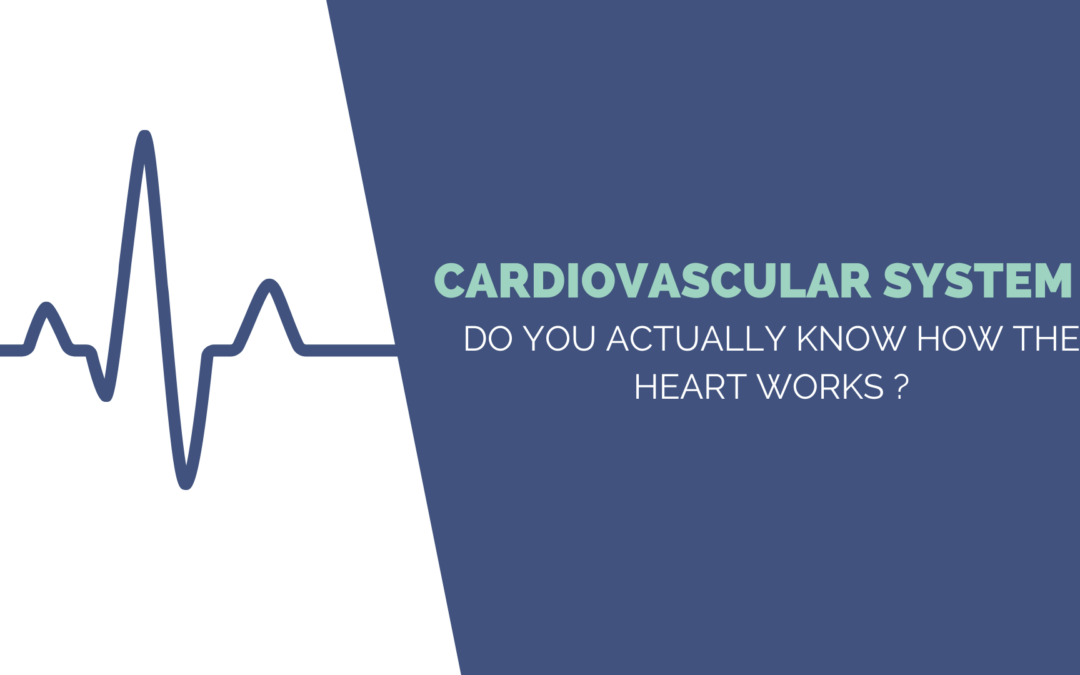Previously, we have published an article discussing heart rhythm disorders, their causes, and the main treatments. Besides, i-Virtual developed solution, Caducy, gives, among others, three values related to the heart activity – the heart rate, the heart variability and the stress level. Therefore, it is important to understand the basics of the cardiovascular system, more precisely the heart function.
General structure organization of the cardiovascular system
When we talk about the cardiovascular system, it does not relate only to the heart. The cardiovascular system is composed of :
– the heart,
– the arterial circuit,
– the venous circuit,
– and capillaries.
Its role is to carry blood to and from all areas of the body. Blood carries the oxygen and nutrients that the organs need to work properly.
The heart structure
The heart is an organ that pumps five liters of blood through the body per minute, it has then a vital role. It is separated by the septum into two hearts, the left heart, and the right heart; each constituted of two cavities – an atrium and a ventricle.
The left heart oversees the systemic circuit, which is the circuit of vessels supplying oxygenated blood to and returning deoxygenated blood from the tissues of the body. While the right heart is in charge of the pulmonary circuit, which is the closed circuit between the heart and the lungs where the blood takes up oxygen from the air breathed into the air sacs and releases carbon dioxide.
Inside the heart, valves ensure that the blood flows in the right direction. As the blood flows according to the gradient of pressure, they also enable the increase of pressure in the heart cavities so the heart can pump.
The heart beats thanks to an electrical activity
The heart contracts in two stages, with the contraction of the atria followed straightaway by the contraction of the ventricles. These contractions make heartbeats. The sounds we hear when listening to the heart are the ones from the closing of the different valves. The heart is able to beat thanks to its electrical activity.
Each heartbeat begins with an electrical signal created by the pacemaker cells located in the sinoatrial node, in the right atrium. These cells are the rhythmic center of the heart. The signal is transmitted through the interatrial pathway, causing the atria to pump blood into the ventricles. It is also transmitted through the internodal pathway to the atrioventricular node. This node allows to delay the contraction of the ventricles so that they have time to finish filling with blood. Then, the atrioventricular node triggers a signal that propagates along His-bundle branches inside the septum wall and Purkinje fibers, along the ventricle walls, causing them to contract and pump blood out of the heart.
Basic monitoring of the electrical activity
The electrical activity of the heart can be traced thanks to an electrocardiogram (ECG) recording. Up to twelve leads can be used to monitor and record an ECG. This makes possible to have a spatial visualization, to better locate the problematic areas. There are five features in an ECG grouped in three main moments: P wave for the atrial depolarisation, QRS complex for the ventricle depolarization, T wave for the ventricle repolarization. The ECG allows also to determine the heart rate which should be between 60 and 100 heart beats for a normal sinus rhythm.
New medical devices for measuring heart rate
New devices are being developed to record heart activity in a simpler and less burdensome way such as smart watches. Caducy is a solution for remote monitoring of the heart rate. It allows simple recording that can be done by anyone, anywhere and without any specific device needed. Caducy makes the access to heart rate monitoring easier which facilitates the patient’s journey. The patient doesn’t need to go to the physician for each medical check-up, anymore. Caducy also enables physicians to get further information about their patient during a virtual consultation, allowing them to better adapt their diagnosis.


